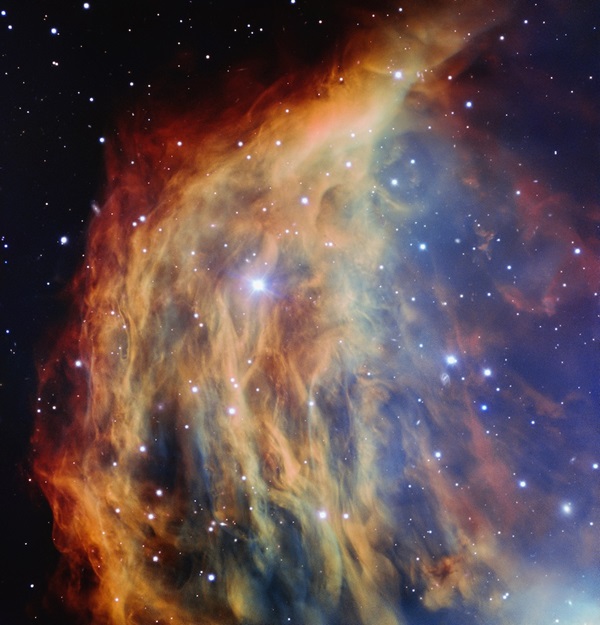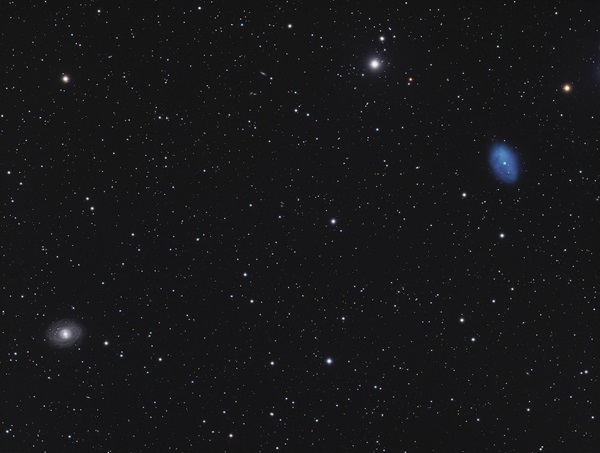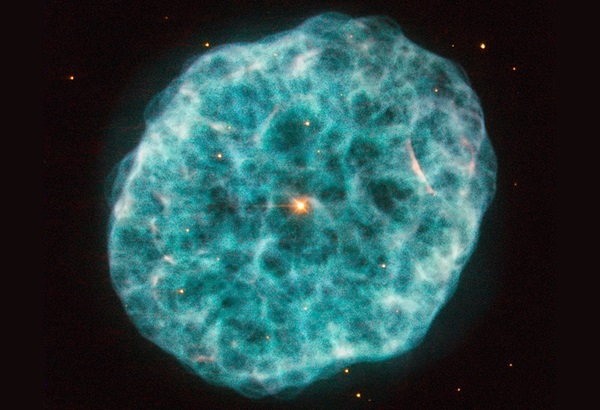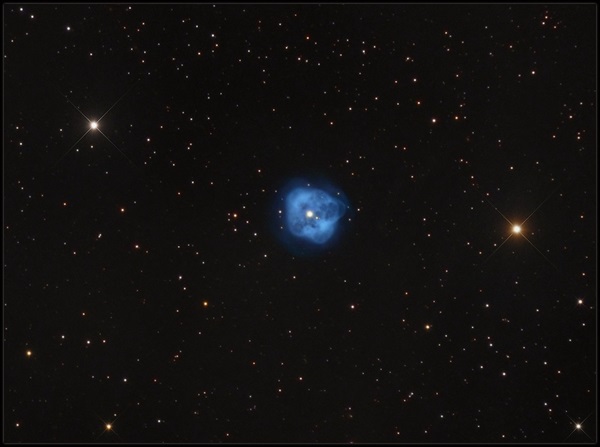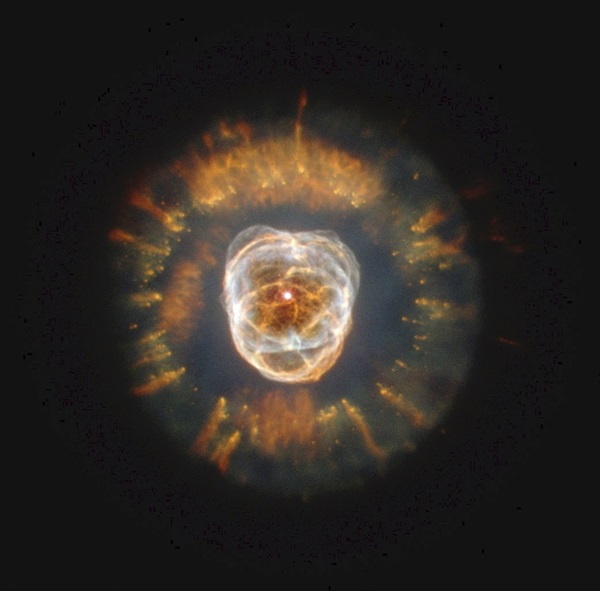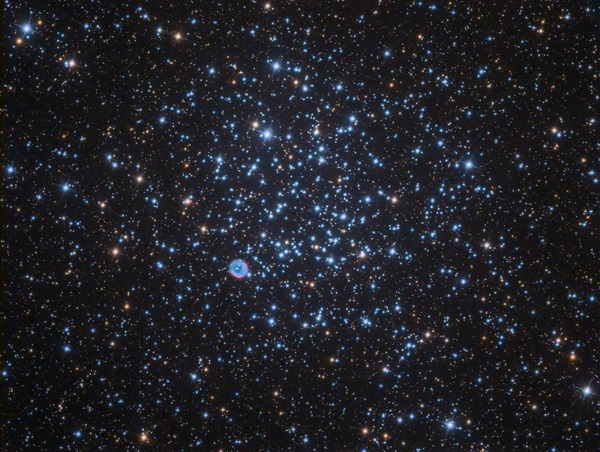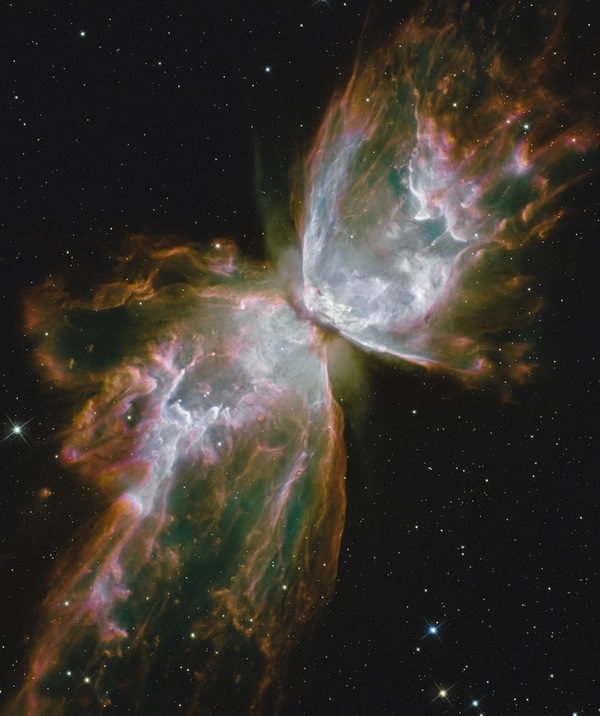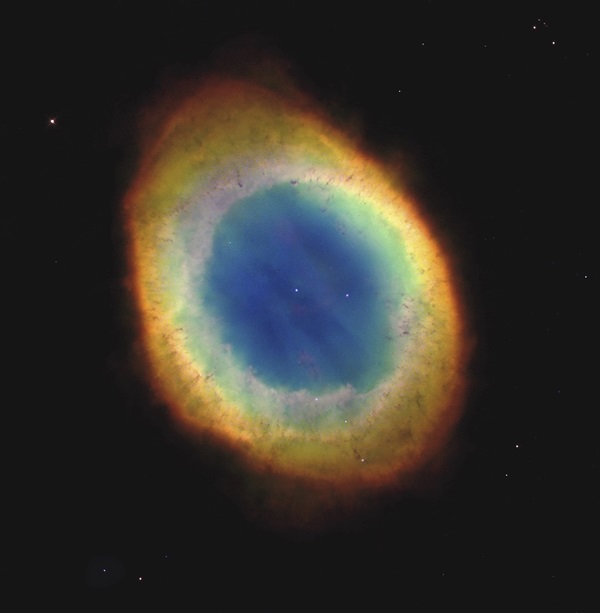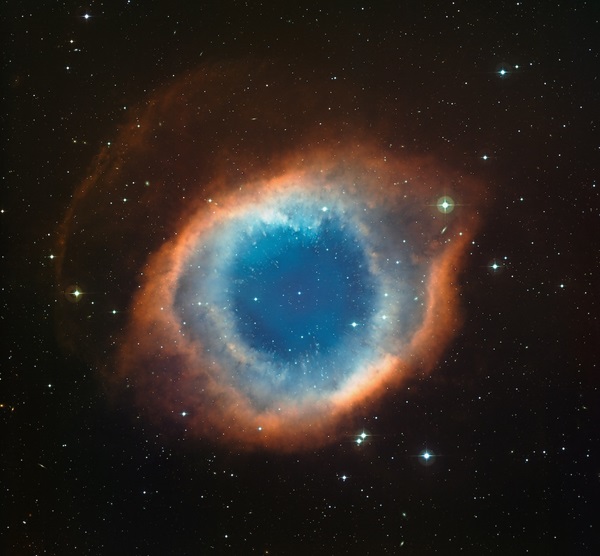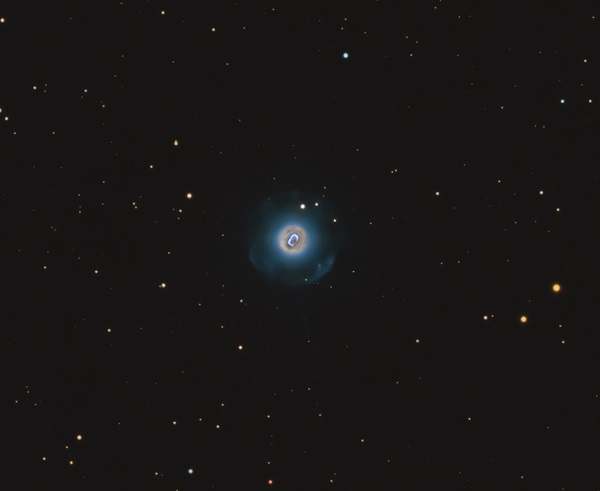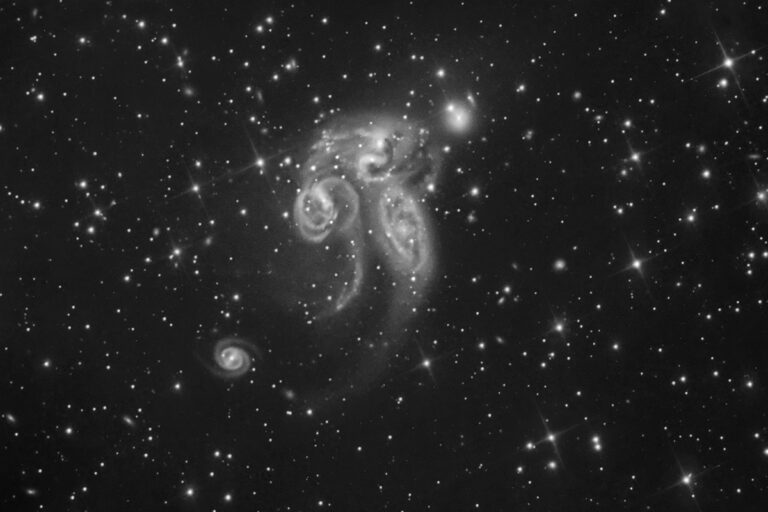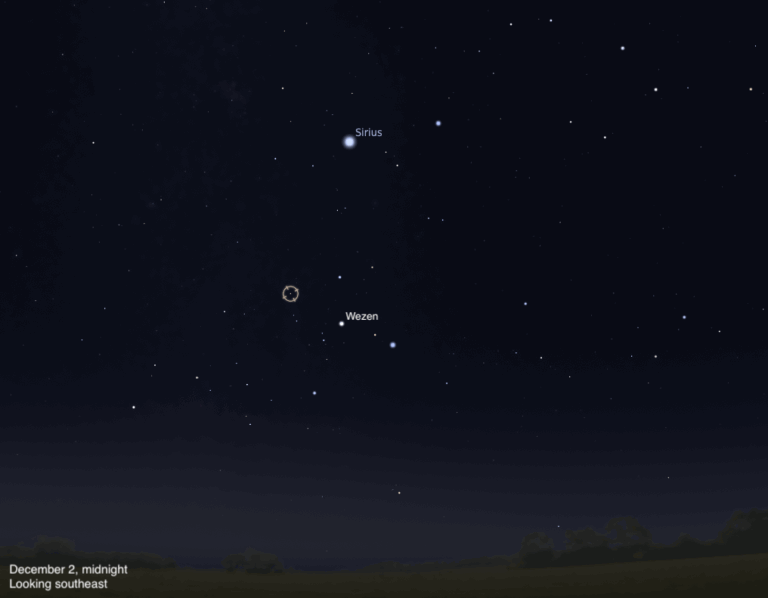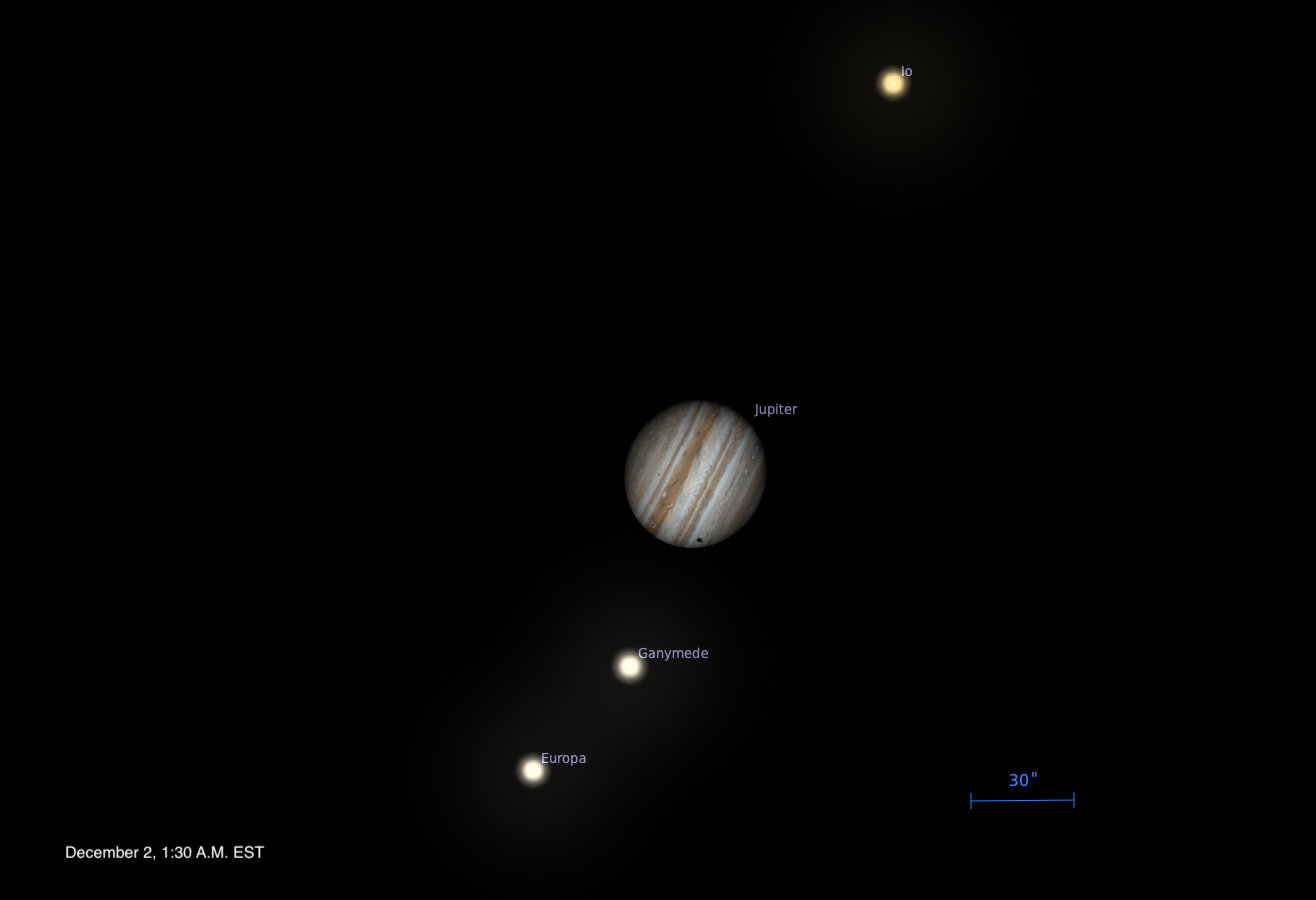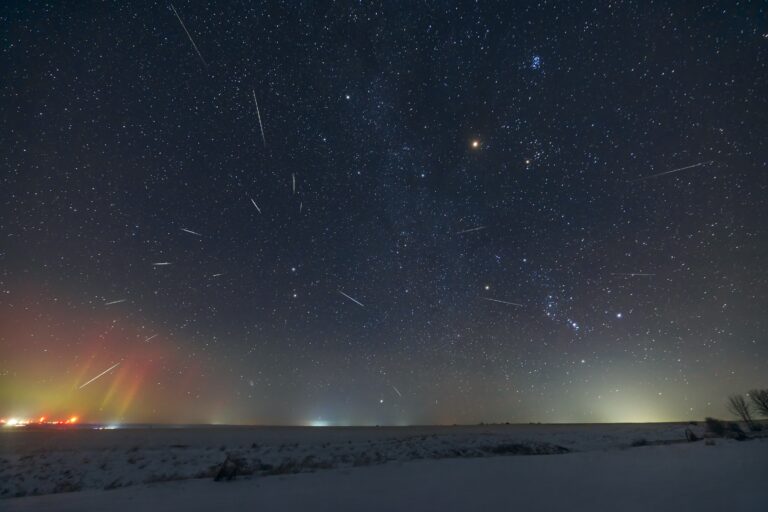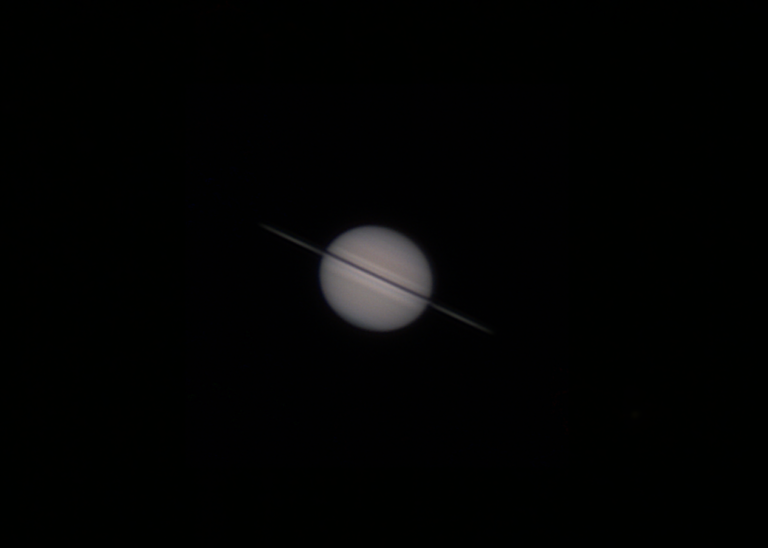Key Takeaways:
- The article describes planetary nebulae, the glowing shells of gas expelled by dying stars, their formation resulting from the exhaustion of a star's hydrogen fuel and subsequent gravitational collapse. The Milky Way galaxy contains over 3,400 such nebulae.
- The text details observational characteristics of numerous planetary nebulae, including their apparent magnitudes, sizes, shapes (e.g., round, oval, bipolar), and visibility with different telescope apertures and magnifications.
- Specific observational advice is provided for various nebulae, such as recommended telescope sizes, magnifications, and the use of filters (e.g., OIII filter) to enhance visibility and detail.
- Several notable planetary nebulae are highlighted by their common names (e.g., Medusa Nebula, Ring Nebula, Cat's Eye Nebula) and their location within specific constellations.
A star like the Sun spends roughly 10 billion years fusing the hydrogen in its core into helium, releasing energy in the process. But eventually, it exhausts its fuel supply. And when fusion stops providing outward pressure, the pull of gravity shrinks the star’s core. This heats it, and the extra energy forces the star’s outer layers to expand. Eventually, the star puffs away its atmosphere in pulsations, creating a glowing shell of gas that astronomers call a planetary nebula.
The Milky Way contains more than 3,400 of these objects. They survive for only tens of thousands of years — the blink of an eye on cosmic scales. After that, the shell is too distant for the former core to sufficiently heat and excite its gas. While they exist, however, planetary nebulae make fascinating targets for amateur astronomers. Here are some of my favorites, which I’ve listed in order of right ascension.
Let’s start our tour with the Bow Tie Nebula (NGC 40) in Cepheus. This planetary never fails to delight when I show it to others. NGC 40 glows at magnitude 11.5 and measures 37″ in diameter. It lies 5.5° south-southeast of the star that marks the head of Cepheus the King, Gamma (γ) Cephei. And even though it’s faint, the Bow Tie Nebula looks good through small scopes due to its high surface brightness.
An object’s magnitude tells observers how bright it appears. For objects that are not point sources — like planetary nebulae — the integrated magnitude compares all the light from the object to the light of a single star. For NGC 40, then, an integrated magnitude of 11.5 means its total light output equals that of a magnitude 11.5 star.
A 4-inch scope shows NGC 40’s oval-shaped disk. Through a 10-inch, the disk shows several bright knots toward the southeast and northwest. Increase the magnification to 200x (if the seeing permits) and look for a dark cavity between the shell and the central star.
Up next is NGC 246 in Cetus. The easiest way to find it is to first locate two stars: magnitude 4.8 Phi1 (φ1) Ceti and magnitude 5.2 Phi2 (φ2) Ceti, which form an equilateral triangle with NGC 246. The planetary itself glows at magnitude 10.9 and spans 3.8′.
Use a 6-inch scope at a dark site, and you’ll see several stars across NGC 246’s face, including an obvious central one. A 12-inch scope reveals a hollow center and a bright, thin rim to the northeast. As with most of these objects, an Oxygen-III (OIII) filter will coax out more detail.
Our first Messier object is the Little Dumbbell Nebula (M76) in Perseus. This magnitude 10.1 planetary sits in the far western end of the constellation, near its border with Cassiopeia and Andromeda. You’ll find it 1° north of the 4th-magnitude star Phi Persei.
As you’ll notice, M76 appears fairly bright because it isn’t that large, so its light is relatively concentrated. Its elongated disk measures about 1′ across. An 8-inch telescope reveals the two lobes that give the nebula its name. If you use a larger scope, you might even just be able to detect a large halo.
Most planetary nebulae are round — or close to it — but the Robin’s Egg Nebula (NGC 1360) in Fornax stretches that rule. It appears twice as long (6.5′) as it is wide, with the long axis running north to south. The object’s magnitude is 9.4, and the northern half glows more brightly than the southern portion. To find NGC 1360, look 5.6° northeast of magnitude 4.0 Alpha (α) Fornacis.
Each lobe of this planetary has a dark lane crossing it. You’ll need at least a 12-inch scope to see them, but the dark region in the southern half is the easiest to spot. It stretches from the nebula’s southern edge to the 11th-magnitude central star.
Look for our next treat, the Oyster Nebula (NGC 1501), 6.9° west of Beta (β) Camelopardalis. It glows at magnitude 11.5 and measures 52″ across.
A 10-inch telescope shows a circular disk, but larger scopes and high powers will reveal an oval shape oriented east to west. The Oyster’s magnitude 14 central star is easier to see than that number implies. The stellar pearl peeks through a slightly darker core that suggests the presence of a thick ring structure. It may even appear patchy, with several small dark areas visible.
Our next target, the Crystal Ball Nebula (NGC 1514) in Taurus, lies 3.4° east-southeast of Atik (Zeta [ζ] Persei). Through an 8-inch telescope at 200x, use a nebula filter to see a magnitude 10.9 round haze that measures 1.9′ across — big for a planetary. This object is definitely brighter along its rim. The magnitude 9.4 central star can be a bit distracting, but an OIII filter should dim it to manageable levels. If you still have trouble spotting the star, try increasing the magnification to 150x or beyond.
Now head south into Eridanus for Cleopatra’s Eye (NGC 1535). It glows at magnitude 9.6 with a diameter of 18″. You’ll find it 4° east-northeast of Zaurak (Gamma Eridani).
Through a 6-inch scope, NGC 1535 has a sharply defined disk surrounded by a faint envelope. A 10-inch scope will let you see some of the Eye’s color. Crank the magnification past 300x, and you’ll observe a dark hollow around the central star. You should be able to detect the boundary between the inner disk and the fainter outer shell.
For our next object, head north and a bit east. It’s the Double Bubble Nebula, also known as NGC 2371 and NGC 2372, a double-lobed planetary that glows at magnitude 11.3. It lies 1.7° north of Iota (ι) Geminorum. Use at least an 8-inch scope, or its details may elude you.
When hunting the Double Bubble, use low power. This object isn’t small. It measures 54″ by 35″. An OIII filter will help. If the seeing is good, use a power of 200x or more and try to spot a brightness difference between the two lobes.
Another worthy target in Gemini is the Medusa Nebula (Abell 21). It glows at magnitude 10.3, but it spreads out its light in a circle measuring 10.3′ across. Look for it 5° north of Gomeisa (Beta Canis Minoris).
This target can be tough to spot through an 8-inch telescope unless your sky conditions are ideal. Expect to see a faint arc with lots of dark gaps. Areas on the northern and southern ends glow brightest.
Stay in Gemini for the Lion Nebula (NGC 2392), which you’ll find 2.4° east-southeast of magnitude 3.5 Delta (δ) Geminorum. It glows at magnitude 9.2 and measures 15″ across, with a double-shelled appearance. The inner shell appears bright with a mottled texture, and a dark ring separates it from the outer shell. When you look at it, does it remind you of a feline face surrounded by a majestic mane?
With a 10-inch or larger scope, details will emerge. Crank up the power until the seeing breaks down. You’ll easily spot the planetary’s 10th-magnitude central star.
Our next target, NGC 2438, is an easy catch. It lies in Puppis, within the boundaries of the bright open cluster M46. The planetary itself has a magnitude of 11 and a diameter of 1.1′. It sits 7′ north of the cluster’s center. Use a 10-inch telescope and high magnification, and you may detect the planetary’s doughnutlike appearance. Several stars lie within the doughnut’s boundary, but none are the object’s central star, which is a faint magnitude 17.7.
Now head due east to a point not quite 2° south of Mu (μ) Hydrae for one of my all-time favorite deep-sky objects: the Ghost of Jupiter (NGC 3242). Despite its name, its color actually makes it look more like Uranus or Neptune.
At low magnification through a 6-inch scope, you’ll see the Ghost’s magnitude 7.8 pale, blue-green disk, which spans 16″. Through larger scopes and at powers in excess of 200x, the interior appears oval, like an eye or a gridiron football. The inner 10″ looks hollow, except for the dim central star. A tough-to-see shell 40″ across surrounds the eye. To spot it, you’ll need a 12-inch or larger scope, a power of about 100x, and an OIII filter.
One of the best springtime planetaries is the Owl Nebula (M97) in Ursa Major, which lies 2.3° southeast of Merak (Beta Ursae Majoris). This magnitude 9.9 object has a diameter of 3.2′, so its surface brightness is low. It looks like an owl’s face because of the two dark areas in its disk. Each “eye” is slightly less than 1′ across and the northwestern one appears a bit darker.
The best views come through an OIII filter and a magnification around 100x. If you view through a 10-inch or larger scope, you’ll see the eyes are not equal in size. If your sky is dark, you may also see the disk’s outer 10 percent as a faint ring.
Next up is the Turtle Nebula (NGC 6210) in Hercules. It glows at magnitude 8.8 and spans 14″. You’ll find it 4° northeast of Kornephoros (Beta Herculis). Even through a small telescope, you can easily identify this planetary’s light blue, turtle-shaped disk. And while you’ll see it right away, it’s so bright that you may miss the magnitude 12.5 central star. Through the largest amateur instruments at high magnification, you’ll notice NGC 6210 is ever-so-slightly oval in an east-west orientation.
Next, head south to Scorpius for the Butterfly Nebula (NGC 6302). You’ll find this magnitude 9.6 object 3.9° west of Shaula (Lambda [λ] Scorpii). It’s named for its insectlike shape and is one of the brightest and most massive planetary nebulae known.
Through a 6-inch scope, the Butterfly appears like a galaxy four times as long as it is wide (50″ by 13″), stretched out east to west. This bipolar nature is apparent at magnifications above 150x. Look for an extension with a tapered end on the western side. Then, try to spot the faint “arm” on the east.
Our next object is a wonderful planetary nebula you’ll find just a bit more than 5° east-northeast of Zeta Draconis. Through telescopes as small as 4 inches in aperture, the Cat’s Eye Nebula (NGC 6543) can look blue, blue-green, greenish-blue, or green, depending on your eyes’ color sensitivity. The color is apparent because the Cat’s Eye is relatively bright (magnitude 8.1) and spans 18″.
Use a magnification of 200x in an 8-inch telescope, and you’ll see some hazy spiral structure around the nebula’s bright central star. A faint shell 5′ across surrounds NGC 6543. This halo contains more mass than the core, and past observers misidentified a bright part of the halo as a galaxy. It even carries its own designation — IC 4677.
Now head south to Ophiuchus to enjoy the Emerald Nebula (NGC 6572), a relatively bright (magnitude 8.1) object that any scope will reveal. It sits 2.2° south-southeast of 71 Ophiuchi. Although it’s small, only 18″ across, it has a high surface brightness. Plus, it’s colorful.
Through an 8-inch telescope, you’ll see the Emerald’s oval shape. A small but bright central region also appears. To pull out the color, I suggest keeping the magnification low, but I’ve had good results from 100x to 400x through a 12-inch scope.
Our next object, the Ring Nebula (M57) in Lyra, is a great target for small telescopes. It glows at magnitude 8.8 and spans 1.2′. Through a 4-inch scope, you’ll see the Ring as a pale gray ball. Cranking the power beyond 100x, you’ll see that the outer edge of the ball looks denser than the center. This gives M57 a distinctive smoke ring appearance.
To find it, locate Beta and Gamma Lyrae, the two stars at the end of the parallelogram farthest from Vega. The Ring lies roughly midway between them.
Now move to Aquila and point your telescope 3.8° north-northwest of Delta Aqilae to observe NGC 6781. It glows softly at magnitude 11.4 and measures 1.8′ across.
Through a 6-inch scope at 100x, NGC 6781 stands out well against a rich, star-filled background. The disk appears soft, irregular, and oval-shaped with a slightly darker center. If the seeing at your observing site is good, look for small, dark blotches over NGC 6781’s face.
Our next treat, the Little Gem (NGC 6818), sits in a region with no bright stars near Sagittarius’ northern border with Aquila. Look for this planetary 9° due west of Beta Capricorni. NGC 6818 glows at magnitude 9.3 and measures 48″ across from north to south and a bit less from east to west. The greenish-blue color most observers see appears best at around 100x. However, at magnifications higher than this, you should spot the Gem’s ever-so-slightly darker inner half.
Now head north to Cygnus for a fun object to show others at star parties. Through 8-inch and smaller scopes, the Blinking Planetary Nebula (NGC 6826) appears to flash when viewed with direct, and then averted, vision. It glows at magnitude 8.8 and spans 25″. Look for it 0.5° east of 6th-magnitude 16 Cygni.
From a dark site, I’ve used a 6-inch telescope at about 100x to make this object blink. Looking at it directly, you’ll easily spot the 11th-magnitude central star, but the nebula fades from view. Look a bit to the side (averted vision), and the nebula pops back into sight, swamping the star’s light.
For our next treat, move slightly south into the constellation Vulpecula. There, you’ll find the Dumbbell Nebula (M27), one of the finest planetaries of all. It glows relatively brightly at magnitude 7.3 and spans a whopping 5.8′. The easiest way to find it is to head 3° north from Gamma Sagittae, the star at the tip of the Archer’s arrow. Small scopes show two bright regions and several stars superimposed on M27’s face. Crank up the power, and the Dumbbell’s high surface brightness will reward you.
Our next two targets lie in Aquarius. First is the Saturn Nebula (NGC 7009), which glows at magnitude 8.3. You’ll find it slightly more than 1° west of Nu (ν) Aquarii.
Through an 8-inch or larger telescope, view NGC 7009 with magnifications above 200x. Its oval disk measures 25″ through its long axis. The ringlike extensions that give the nebula its name protrude on each side another 15″. At the ends of those protrusions are fainter bulbs, but you’ll need at least a 12-inch scope to pick them out. What color do you see in the Saturn Nebula? Whether you see it as mostly blue or mostly green depends only on your color perception.
The second treat the Water-bearer offers is the Helix Nebula (NGC 7293). You’ll find this great object 1.2° west of Upsilon (υ) Aquarii. The Helix is one of the brightest hard-to-see objects in the sky. Although its total light output nearly reaches 7th magnitude, its diameter is 13′, so its surface brightness is disappointingly low. For best results, use binoculars that provide 7x to 15x magnification and have front lenses larger than 50 millimeters.
Through 12-inch and larger scopes with an OIII filter, you’ll see bright and dark regions in the ring. The northern and southern edges seem slightly brighter.
Our final target — one of my favorites — is the Blue Snowball (NGC 7662) in Andromeda. It glows at magnitude 8.3 and spans 12″. Through an 8-inch scope, the Snowball is a small, evenly illuminated disk. Crank up the power and you’ll see the nebula’s rich inner structure. Look for a bright ring around NGC 7662’s hollow center. Then try to spot the fainter shell that surrounds that ring. The ring is brightest to the northeast and southwest.
As you’ll quickly see by going through this list, planetary nebulae each have unique features. Pick your favorites and share them with your friends at the next star party. Good luck!

